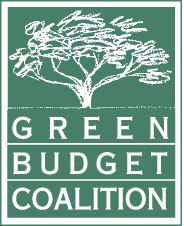The Green Budget Coalition appreciated the commitments in Budget 2024 to a “right to repair to increase product durability and repairability” and, since fulfilled, to launching consultations in June 2024 to develop a right to repair framework, focused on durability, repairability, and interoperability.
In 2020, Canada had a circularity rate of only 6%. As efforts and funding are primarily directed to recycling, priority circular economy strategies— including reuse and repair—lack financial support, especially for larger-scale reuse initiatives.
Funding to support reuse initiatives are vital to successfully deploying reusable alternatives that reduce the demand for single-use items, particularly in the food and grocery sectors. While the plastics challenge launched in 2022 was intended to achieve this goal, its short duration and the ineligibility of not-for-profit companies are hindrances to the success of this federal funding.
Additionally, while in 2021, Canadian households spent $2,177 per year on household appliances and electronics,48 only 19% of those surveyed had their last broken appliance repaired. A repair fund like France’s, launched in 2022, would allow people with broken appliances, no longer under warranty, to obtain a discount at the time of the repair.
Recommended Investments:
- $87 million over three years, followed by $87 million per year, ongoing, to implement a repair fund to reduce the cost of repairing electronics and appliances. [ISED, FIN]
- $100 million over three years to establish a reuse fund to support businesses and organizations developing reusable container and packaging solutions as alternatives to single-use plastics, followed by $35 million per year, ongoing, until the effective implementation of reusable containers and packaging in Canada. [ECCC, ISED]

